Can the Metro Rail be a Great Equalizer?

The inauguration of Mass Rapid Transit (MRT) Line-6 has been full of symbolism. If Padma Bridge signalled a new era of regional connectivity, Dhaka's MRT begins a new chapter in the history of Bangladesh's urbanisation.
A "new" type of urban mobility comes to fruition in the month of the country's emancipation, thanks to Prime Minister Sheikh Hasina's unwavering commitment to the country's modernisation. The PM was MRT's first passenger, and its first operator was Mariam Afiza, a chemistry graduate from Noakhali Science and Technology University.
On the first day of metro rail's public operation, I witnessed long lines at Agargaon Station in the wee hours. People wanted to be part of a historic journey between Uttara and Agargaon, a short 11.73 km distance, but a giant leap for the nation. This is a catalytic moment, a time for jubilation.
But it is also a time to be cautious in our expectations and optimism. The key question before us now is: will the metro rail live up to its promise? Will it mitigate Dhaka's paralysing traffic congestions? If it does, wonderful. Money spent well. But if it doesn't, why? What will have gone wrong?
There should be a robust policy conversation on post-MRT Dhaka and its promises and perils, so that we can calibrate future investments in our cities.
The UK-based global consultancy Halcrow Group undertook a study on mass rapid transit in 13 developing countries and concluded that cities in those countries witnessed very little reduction of traffic congestion after the introduction of metro systems. But this doesn't have to be Dhaka's case. Dhaka could take preemptive measures to put MRT on a path to success.
Whether an infrastructure like the newly minted metro rail has the capability, on its own, to be a solution to a problem as socially complex as traffic congestion must be considered. What else needs to be done to harness the full potentials of the metro rail to reduce traffic jams and bring some discipline on the roads? Will the middle class or the upper class sacrifice their mobile castle – the personal automobile – to embrace the idea of mass transit, abandoning their class ego and entrenched sense of social status? How do we encourage all economic classes to use the metro rail as their commuting option? Does the metro rail have the potential to create a culture of social equity in the city?
According to JICA, once completed, Dhaka's six metro lines will carry 5.2 million people per day. That is over 25 percent of Dhaka's current population.
If, hypothetically speaking, 30,000 personal cars lift off the streets of Dhaka everyday due to widespread public use of the metro rail, imagine the benefits from the reduction in traffic congestion, carbon dioxide in the air, and of related urban pathologies like noise, stress, and disorientation. Imagine, also, how people will be showing up at work or to school on time and how much time will be saved every day. This saved time could be spent in more productive ways, taking the country to new heights of prosperity and progress. Consider how "late Latif" could be a (denigrated) character of the past.
Riding public transit is a lifestyle. This lifestyle develops with a combination of civic culture, social equity, voluntary sacrifice of personal comfort, a community-oriented desire for city mobility, and carbon-reducing environmental awareness, among other things. Championing this lifestyle would require massive social campaigns.
The success of the metro rail will be contingent upon a host of other related factors: people's willingness to adapt to a lifestyle based on public transit; affordable train fare; easy accessibility to metro stations; user-friendliness of the metro station; metro rail's integration with other modes of transportation and relationship to the city's land-use pattern; transportation options between home and metro station; parking options around metro station; pedestrian infrastructure like footpaths leading to metro stations; gender sensitivity; the quality of transit-oriented development around metro station; and, last but not least, whether the status-conscious middle-class would sacrifice its love of personal cars to embrace mass transit as its mobility choice.
All of the above have created the basic urban DNA of metropolises like New York, Boston, London, Paris, Madrid, Hong Kong, Seoul, Tokyo, and Singapore, among other cities. Having visited all these cities, I realised how the metro system creates discipline in urban mobility, punctuality as a life philosophy, social equity (that anybody can access the metro rail irrespective of economic and social status), and psychological comfort (that you can reach any point in the city without getting lost).
A metro transit system may create the foundation of a humane city.
As the metro rail becomes part of urban life in Dhaka, it cannot be thought of as a one-dimensional infrastructure, unrelated to the social patterns, norms, and cultures of the city and other forms of "soft" infrastructure like footpaths, or "paratransit" like carpools or shared rides from home to station. The metro rail is much more.
There should be comprehensive planning in which MRT is seen as one piece of the urban-mobility puzzle.
How are the metro stations integrated with public and private bus lines? Will there not be traffic congestion around the station during peak hours in the same way schools create massive traffic clots during morning rush hours? To mitigate this common problem, cities around the world typically seek to cluster high-density housing around transit stops, so that people can simply walk to the metro station, decreasing the reliance on any carbon-emitting vehicles. People should have abundant affordable housing options around MRT stations.
Instead of simply glorifying MRT as the ultimate panacea for the city's chaos and congestion, there must be robust social campaigns to develop what I would call city-dwellers' "socio-urban capital," a combination of behavioural transformation toward civic mindedness, propensity for a low-carbon lifestyle, walkability, and the public's willingness to shift from personal automobiles to mass transit.
City people's socio-urban capital can be increased by a combination of social movements, popular advocacy, people-centric urban design (for instance, an integrated footpath system), and a safe, attractive, and accessible public transit.
If the Agargaon Station serves as a model for other stations, it is a bit disappointing.
Architecturally, the station could have been more sensitive to the tropical climate by being open to natural light and air at the ticketing level. The entrance to the station is not inviting. Instead of the collapsible gate – with its intimidating, colonial-era-government-building-mentality – there could have been a more invitingly modern and secure entrance option.
Before I end, I would like to talk about a potential, transformative contribution of the metro rail, one beyond its core objectives to ease mobility and reduce traffic congestion on Dhaka roads.
The metro rail promises to reduce the city's rampant class disparity. If you look around a bit critically, socio-economic class divides are inscribed on every aspect of Dhaka's social geography, creating polarising spatial experiences all around. The divides of Gulshan-Badda, public vs private hospitals, private vs shorkari schools, air-conditioned bus vs tempo, the impoverished pedestrian on dangerous sidewalks vs the affluent passenger in personal car – all create a city of entrenched class divisions.
The metro rail has the potential to be a great equalizer. Anybody can get on it by paying for the ride. The corporate executive and the peon can sit side by side. It is a great feeling and the sign of a humane city that treats all its citizens with respect and equity.
Dhaka's 21st century social transformation may begin from the seed of the metro rail.
Adnan Zillur Morshed, PhD, is an architect, architectural historian, urbanist, and professor at the Catholic University of American in Washington, DC, and executive director of the Centre for Inclusive Architecture and Urbanism at BRAC University. "Dhaka Delirium" is his forthcoming book. Email him at [email protected]
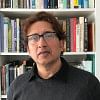
 For all latest news, follow The Daily Star's Google News channel.
For all latest news, follow The Daily Star's Google News channel. 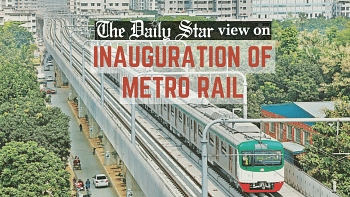
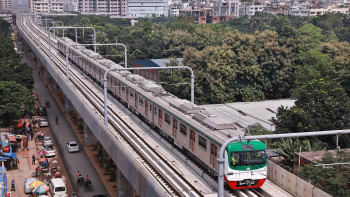
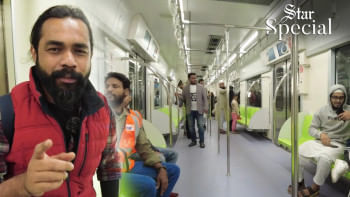
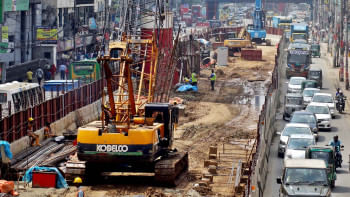
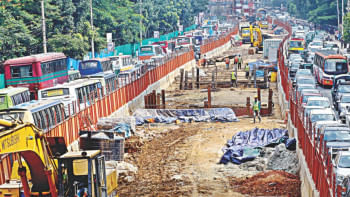
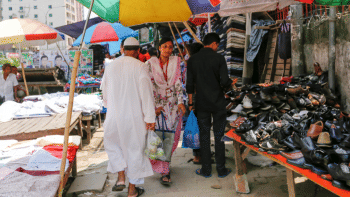


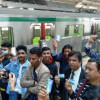
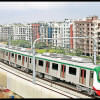
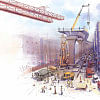
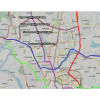
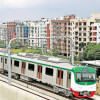


Comments